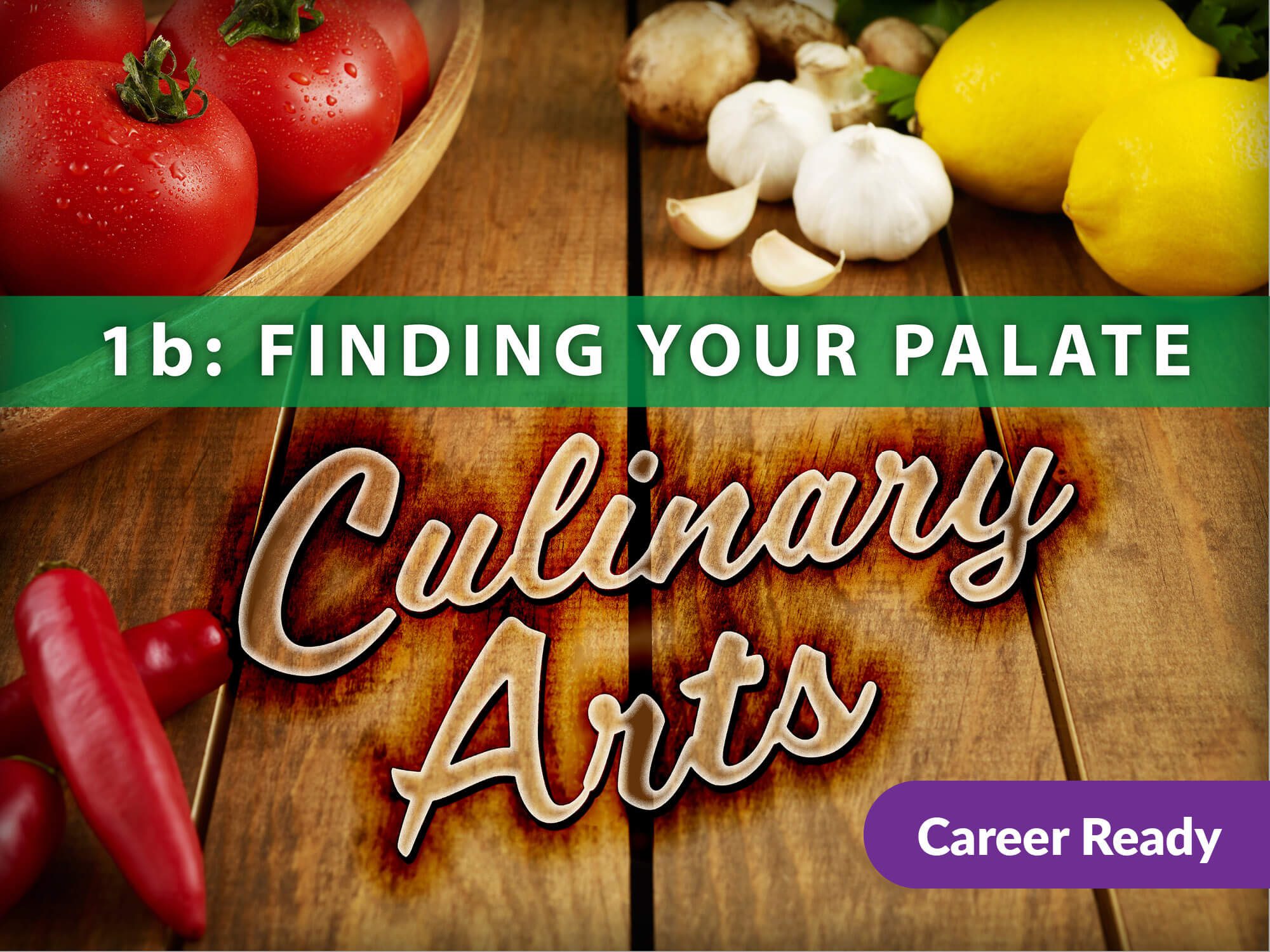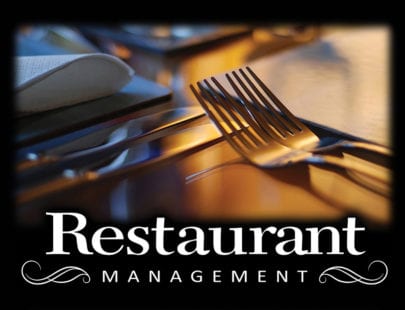
Culinary Arts 1b: Finding Your Palate
Did you know that baking is considered a science? Discover how to elevate your culinary skills through the creation of stocks, soups, sauces, and learn baking techniques. Examine sustainable food practices and the benefits of nutrition while maintaining taste, plating, and presentation to truly wow your guests. Explore careers in the culinary arts for ways to channel your newfound passion!
Units at a Glance
Unit 1: The Healthy, Sustainable Kitchen
As an aspiring chef, the effort to embrace health and sustainability is important on many levels. Not only is the kitchen a culinary landscape where nutrition is created, it is also the scene of tremendous waste. That’s why a firm understanding of nutritional principles must go hand in hand with a clear sense of how kitchen ingredients and processes can be maintained and supported over long periods of time. This combination of information gives chefs the power to create delicious food while still keeping an awareness of other important factors, like the health and well-being of diners and the world.
What will you learn in this unit?
- Describe the six major food groups and how they affect dietary health
- Apply nutritional principles during food preparation and planning
- Discuss the strengths and weaknesses of nutritional guidelines
- Demonstrate healthy cooking techniques
- Explain the importance of sustainability in the kitchen and how it can be achieved
Unit 2: Tools of the Trade
Setting up your workspace in busy professional kitchen is a lot like preparing for a scheduled natural disaster. You can never be fully prepared for it, and you never know what you are going to get—all you know is the rush is going to hit and it’s going to hit big. What you can do is be ready to make your workstation hum. The goal is to make it through the shift successfully, perhaps even enjoying the process of learning as you go. The kitchen is not always predictable and it’s not always pretty—but if you can master the use of your own tools and equipment, you will emerge from the madness in one piece. And along the way, the kitchen brigade will look out for you, help you, and hopefully share a few thoughts on how to improve your cooking game.
What will you learn in this unit?
- Describe the tools and equipment found in a commercial kitchen
- Explain how to best select, use, and maintain kitchen equipment
- Develop and use an equipment checklist in the kitchen
- Discuss proper mise en place in a kitchen workstation
Unit 3: Stocks, Sauces, and Soups
There’s a secret to cooking that many people don’t know. It’s not all about the size of the pork chop or the heat of the fire. And success as a chef is not based solely on the sharpness of your knives or the creativity of your mind. While those aspects are certainly important, they don’t rule the culinary world. Instead, the true talent of a chef relies on a much smaller detail—namely, cooking technique. This skillfulness in creating the most basic dishes is the foundation of all cooking, from haute cuisine to simple burgers. When your method or approach to simple foods is spot-on, it translates into larger masterpieces in the kitchen. That’s why stocks, soups, and sauces are such a critical piece of your culinary education. As the foundation for flavor, these liquid delights are one of the first building blocks for new chefs who are looking to develop a strong skillset. And once they are mastered, the colorful, delicious landscape of food becomes even more accessible.
What will you learn in this unit?
- Define the four essential components of cooking stock
- Identify and describe the two classifications of soup
- Discuss the principles of thickening agents
- Explain the characteristics and derivatives of the five mother sauces
Unit 4: Baking: Breads, Cakes, & Cookies
The world of baking may seem vast and complicated—and maybe it is a little—but it also has a some very clear ingredients and methods. Anyone new to baking can easily set up a full-service kitchen with just nine essential ingredients and a working knowledge of how these substances fit together to create all sorts of delicious treats. Once the basic science of baking is clear, everything else is just icing on the cake.
What will you learn in this unit?
- Describe various baking methods
- Identify the basic ingredients involved in baking
- Explain the principles of food science in baking techniques
- Discuss the ways baking is considered both a science and an art
Unit 5: Culinary Business and Entrepreneurship
We’ve talked about food as science and art; now it is time to look at it as a business. If you choose to join the kitchen brigade, you are in for a fast-paced environment, but there are a lot of different ways to incorporate yourself into the food service world outside of cooking in a commercial kitchen. Remember, the culinary arts are about taking tradition and turning it into something innovative and delicious, which is why it’s important to understand more about the current trends in food service and how they affect the industry as a whole.
What will you learn in this unit?
- Discuss the history and trends of the food service industry
- Explain the procedures of purchasing, receiving, and issuing
- Identify how entrepreneurs maximize opportunity
- Describe various marketing strategies in food service
Unit 6: Service, Style, and Satisfaction
When we think about the art of cooking, it’s easy to stay focused on things like ingredients, methods, and nutrition, but it’s also important to remember the culinary experience is precisely that—an experience comprised of many elements beside what’s on the menu. For diners, eating in a restaurant, especially an upscale one, offers the chance to enjoy great service while also appreciating the flavors and overall presentation of the food itself. And as a food service professional, this experience is directly linked to personal pride, expert efforts, and a dedication to positive customer relations. When it comes to culinary artistry, the areas of service, style, and satisfaction are yet another place where creativity reigns.
What will you learn in this unit?
- Differentiate between different types and styles of food service
- Identify proper techniques for handling customer relations
- Describe some methods of effective food presentation
- Explain formal dining etiquette from the perspective of both a server and a customer
Unit 7: Choosing Your Culinary Career
A professional opportunity is not worth much if you don’t know how to take advantage of it. Seeking ways to maximize what’s in front of you, both personally and professionally, is key to finding employment as well as staying happy at work. From self-assessment to networking to setting goals, choosing your culinary career demands a lot of skills and knowledge, but most of all, it requires confidence and the belief that you can achieve all of your dreams with the right moves.
What will you learn in this unit?
- Identify career and employment opportunities
- Explain various steps in the career decision-making process
- Discuss different levels of education and training required for food service
- Describe ways to manage multiple roles and responsibilities
Unit 8: Networking for Success
With so much knowledge in your head about the tools, techniques, and etiquette of the culinary world, it’s time to start thinking about how all this information can help you transform your foodie dreams and goals into real, tangible achievements. Learning how to map out your journey through the food service industry is just as important as understanding the secrets to great soups and sauces; it just takes some motivation, a little inspiration, and a whole lot of self-confidence to visualize the career you want in food service, hospitality, and beyond. You are not alone in this journey; plenty of industry professionals and leadership organizations are there to help you reach your goal.
What will you learn in this unit?
- Explain the significance of professional organizations in hospitality and food service
- Create a personal leadership plan
- Identify leadership and teamwork opportunities to enhance your professional skills
- Name and define several prominent culinary associations
Required Materials
- Computer with:
- Internet access
- Word processing program
- Slideshow presentation program
- Video recording device
- Friend and/or family member to help act-out scenarios in videos
- Props for Videos (fake items may be subbed for real ones):
- Workstation with common cooking equipment
- Food to use in the preparation of a cold recipe other than a salad
- Table setting materials including plates, flatware, glasses, napkins
- Pen and paper
- Serving tray
- Sample menu
- Telephone
- Cash register or something similar to act as cash register
- Ingredients to make a soup, a stock, and a sauce




